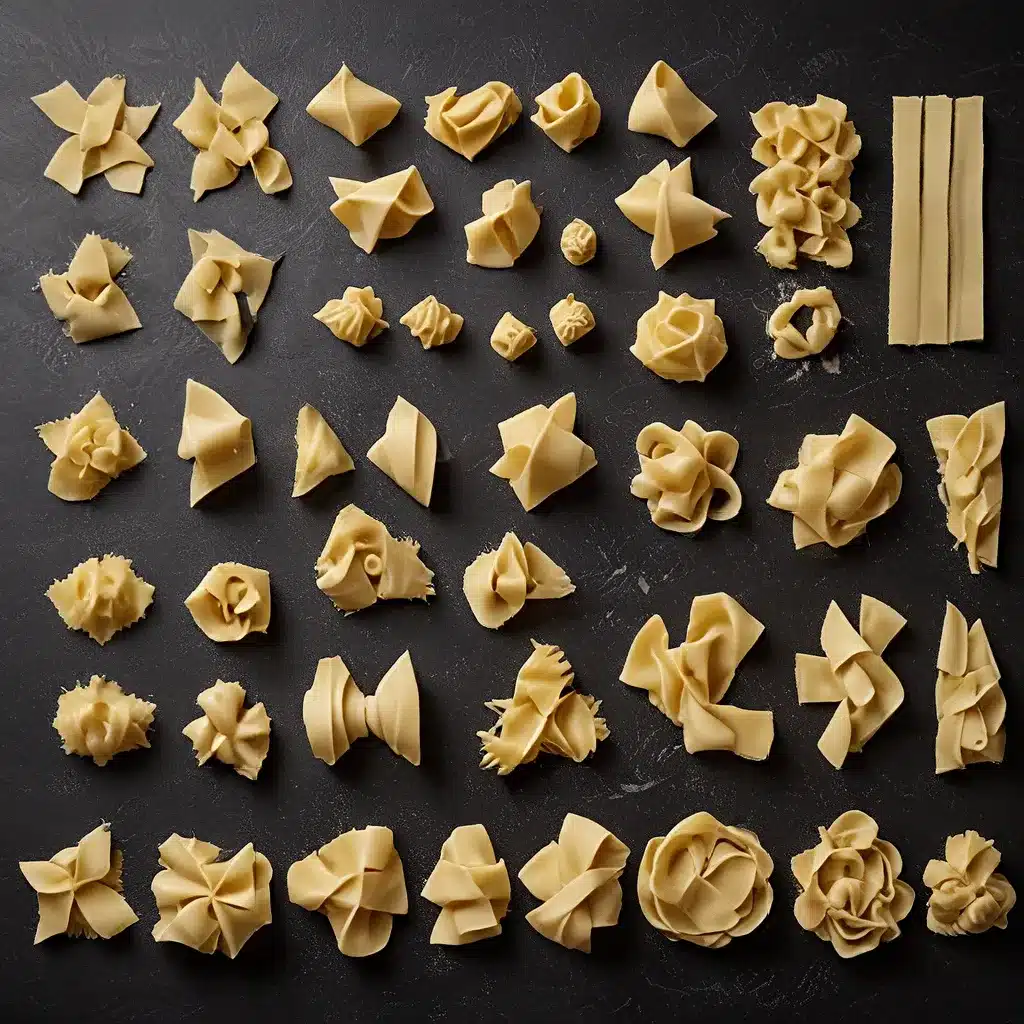
Unraveling the Pasta-Making Magic
As a self-proclaimed pasta enthusiast, I’ve always been fascinated by the art of homemade pasta. There’s something incredibly satisfying about getting your hands dirty, kneading the dough, and shaping it into delectable, one-of-a-kind creations. And let me tell you, the flavor and texture of fresh, handmade pasta simply can’t be matched by anything you’ll find at the grocery store.
But if you’re like me, you may have felt stuck in a rut, churning out the same old spaghetti and ravioli time and time again. Well, my friends, the time has come to elevate your homemade pasta game. In this article, we’re going to dive into the world of unique DIY pasta shapes and fillings, unlocking a whole new realm of culinary possibilities.
Pasta Shapes: Unleash Your Creativity
The world of pasta shapes is truly vast and diverse, far beyond the classic spaghetti and penne we’ve all come to know and love. Sure, those standbys have their place, but why not venture out and explore some truly unique and eye-catching creations?
One of my personal favorites is the cookie-cutter ravioli. By using simple cookie cutters, you can transform your homemade pasta dough into all sorts of whimsical shapes, from hearts and stars to flowers and even dinosaurs. Not only do they make for a delightful presentation, but the varied shapes also allow you to play with different fillings and flavor combinations.
Another pasta shape that’s sure to impress is the squid ink black pasta. With its striking, inky hue, this type of pasta not only adds visual flair to your dishes but also delivers a subtle briny flavor that pairs beautifully with seafood and cream-based sauces. And the best part? It’s surprisingly easy to make at home – all you need is some squid ink and a few simple ingredients.
Perhaps you’re more of a textural thrill-seeker. In that case, you’ll want to explore the world of extruded pasta shapes, like bucatini, chitarra, and rigatoni. These pastas are made by pushing the dough through specialized dies, resulting in unique hollow or ridged shapes that catch sauces and fillings in delightful ways.
Fillings: The Flavor Frontier
Now, let’s talk about the real showstoppers – the fillings that can transform your homemade pasta into a culinary masterpiece. Gone are the days of the standard cheese or meat fillings. It’s time to get creative and push the boundaries of what’s possible.
Take, for example, the olive sourdough bread recipe from The Clever Carrot. By incorporating plump, juicy olives, fragrant thyme, and tangy lemon zest into the dough, you can create a truly unique and flavorful bread. Why not apply a similar approach to your homemade pasta?
Imagine a butternut squash ravioli, with a silky-smooth filling infused with warming spices like cinnamon and nutmeg. Or how about a ricotta-based ravioli that’s been elevated with the addition of sun-dried tomatoes, fresh basil, and a touch of garlic? The possibilities are truly endless.
And don’t be afraid to get a little adventurous with your fillings. I’ve heard of pasta aficionados experimenting with everything from roasted beets and goat cheese to wild mushrooms and truffle oil. The key is to balance the flavors and textures to create a harmonious and truly memorable dining experience.
The Art of Pasta-Making: Techniques and Tips
Of course, crafting these unique pasta shapes and fillings isn’t as simple as just throwing a few ingredients together. There’s an art and science to it, and it’s essential to master the fundamentals before you start getting too creative.
One of the most important aspects of homemade pasta-making is understanding the importance of resting the dough. As mentioned in the source information, allowing the dough to rest for 30 minutes to an hour after the initial mixing is crucial. This “autolyse” period allows the flour to fully hydrate and the gluten to develop, making the dough much more pliable and easy to work with – the perfect canvas for adding your creative fillings.
Another key technique to master is the stretch and fold method for incorporating fillings. By gently stretching the dough and folding it over itself, you can evenly distribute the fillings throughout the pasta. This not only ensures a delightful flavor in every bite but also helps prevent the fillings from popping out during cooking.
And let’s not forget about the importance of proper cooking techniques. Whether you’re boiling, baking, or pan-frying your homemade pasta, it’s crucial to pay attention to timing and temperature to ensure your creations turn out perfectly cooked every time.
Embracing the Pasta-Making Journey
As you embark on your homemade pasta-making adventure, I encourage you to embrace the process and have fun with it. Pasta-making is a true labor of love, and the more you experiment, the more you’ll discover about your own personal preferences and techniques.
Don’t be afraid to try new things, make mistakes, and learn from them. After all, that’s the beauty of homemade pasta – it’s a canvas for your culinary creativity. So, grab your rolling pin, fire up your imagination, and get ready to elevate your pasta game to new heights. Who knows, you might just discover your new signature dish in the process.
And remember, if you ever need a little inspiration or guidance, be sure to check out the incredible resources available at Saint Marc USA – your one-stop-shop for all things pasta-related. Happy cooking, my friends!

